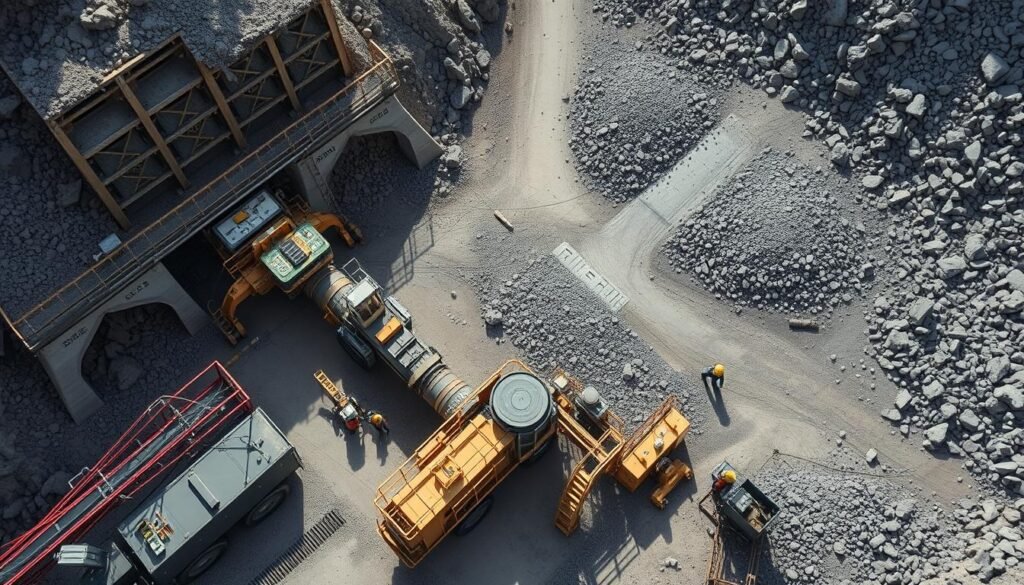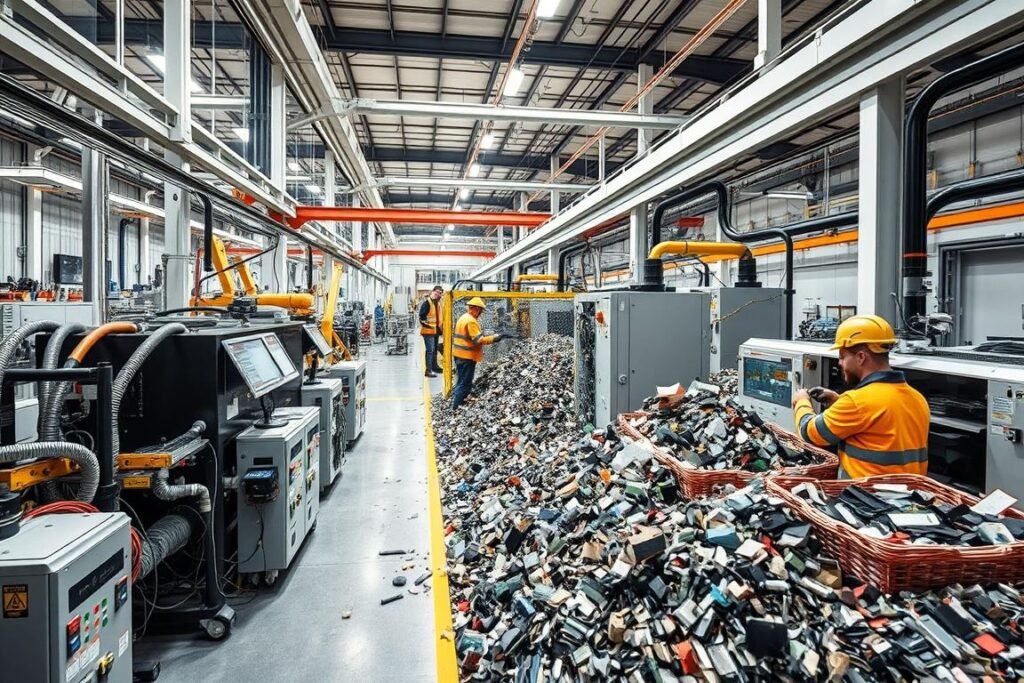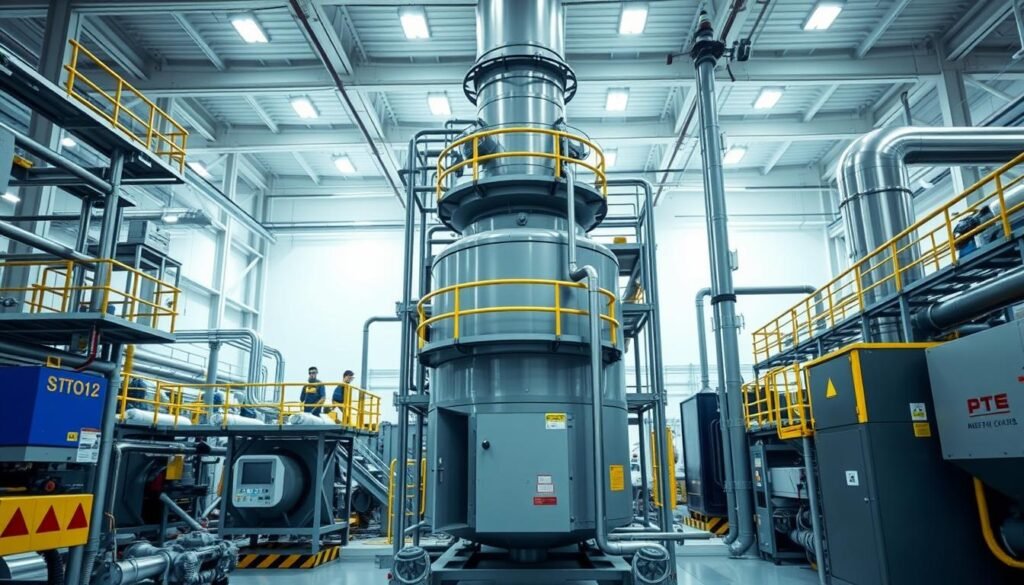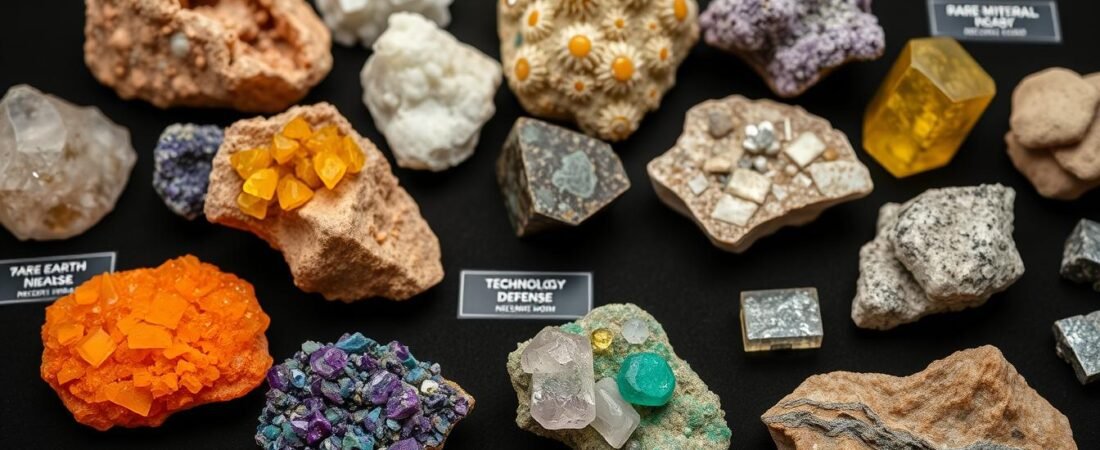The United States stands at a critical juncture in its approach to securing vital mineral resources that power everything from smartphones to military equipment. The Rare Earth Critical Minerals Mining Bill represents a significant shift in how America addresses its dependency on foreign sources for these essential materials. With China currently dominating global supply chains for rare earth elements and critical minerals, this bipartisan legislation aims to revitalize domestic mining and processing capabilities while strengthening national security.
This comprehensive guide examines how the Critical Minerals Security Act could transform America’s resource landscape, create jobs, and position the U.S. as a leader in sustainable mining practices for the 21st century economy.
Understanding Critical Minerals and Their Strategic Importance
Critical minerals like lithium, cobalt, and rare earth elements are essential components in modern technology
Critical minerals and rare earth elements (REEs) form the backbone of modern technology and defense systems. These resources, though often required in small quantities, are irreplaceable in manufacturing everything from electric vehicle batteries to missile guidance systems.
What Makes These Minerals “Critical”?
The designation “critical” refers to minerals that are both essential to key industries and subject to potential supply disruptions. According to the U.S. Geological Survey, critical minerals meet three criteria: they are essential to economic or national security, their supply chains are vulnerable to disruption, and they serve functions that cannot be easily substituted.
“Critical minerals are essential to America’s national security and energy resiliency since these raw materials are used to power everything from complex military technologies to personal goods like smartphones.”
Current Supply Chain Vulnerabilities
The United States currently imports more than 80% of its rare earth elements from China, creating significant strategic vulnerabilities. This dependence extends beyond just raw materials to processing capabilities, with China controlling approximately 85% of the global processing capacity for these minerals.
Stay Informed About Critical Mineral Supply Chains
Download our comprehensive guide to understanding how critical minerals impact national security and economic development.
The Critical Minerals Security Act: Key Provisions
The bipartisan Critical Minerals Security Act represents a comprehensive approach to addressing America’s critical mineral challenges. Introduced in the Senate, the legislation contains several key provisions designed to strengthen domestic supply chains and reduce dependence on foreign sources.
Global Supply Chain Assessment
The bill directs the Department of Interior to conduct thorough evaluations of global critical mineral resources, with particular attention to ownership structures and control. These assessments would be updated every two years, providing policymakers with current information on supply chain vulnerabilities.
Support for U.S. Companies
A key provision establishes processes to assist American companies seeking to divest from critical mineral operations in countries of concern. This creates pathways for businesses to realign their supply chains with national security interests.
Technology Sharing Framework
The legislation creates mechanisms for sharing intellectual property related to clean mining and processing technologies with U.S. allies and partners. This collaborative approach aims to expand the global supply of responsibly sourced critical minerals.
| Provision | Purpose | Timeline |
| Global Resource Assessment | Identify critical mineral resources worldwide and their ownership | Initial report within 1 year, updates every 2 years |
| Divestment Assistance | Help U.S. companies exit operations in countries of concern | Process established within 1 year of enactment |
| Technology Sharing | Share clean mining IP with allies and partners | Framework developed within 18 months |
| Supply Chain Monitoring | Track changes in critical mineral ownership and control | Continuous with biennial reporting |
Track the Bill’s Progress
Sign up for legislative updates to stay informed about the Critical Minerals Security Act as it moves through Congress.
Economic Impact: Potential for a Domestic Mining Boom

The Critical Minerals Security Act could catalyze significant economic growth across multiple sectors of the American economy. By incentivizing domestic mining and processing operations, the legislation aims to create jobs while securing vital supply chains.
Job Creation Potential
According to industry analysts, a revitalized domestic critical minerals sector could generate tens of thousands of high-paying jobs across the mining, processing, and manufacturing sectors. These positions would span from extraction operations to advanced processing facilities, creating opportunities in both rural and urban communities.
Investment Opportunities
The legislation is expected to unlock significant private investment in domestic mineral resources. With greater regulatory certainty and government support, mining companies and technology firms are likely to increase capital expenditures on exploration, extraction, and processing capabilities.
Regional Economic Development
States with significant mineral deposits stand to benefit substantially from the bill’s provisions. Regions in Nevada, Wyoming, California, and Texas could see renewed economic activity as mining operations expand to meet growing demand for critical minerals.
Manufacturing Renaissance
Secure access to critical minerals could help revitalize American manufacturing, particularly in high-tech sectors that rely on these materials. From electronics to defense systems, domestic supply chains would become more resilient and competitive.
Innovation Ecosystem
The bill’s focus on developing advanced mining and processing technologies could spark innovation across multiple industries. Research institutions and technology companies would likely see increased funding for developing more efficient and environmentally friendly extraction methods.
Environmental Considerations and Sustainable Practices
While the Critical Minerals Security Act focuses on expanding domestic mining capabilities, it also addresses the need for environmentally responsible practices. Modern mining techniques offer significant improvements over historical methods, with reduced environmental footprints and comprehensive reclamation plans.
Balancing Resource Development and Environmental Protection
The legislation encourages the development of advanced mining technologies that minimize environmental impact while maximizing resource recovery. This includes water conservation techniques, reduced energy consumption, and improved waste management practices.
Environmental Benefits
- Domestic mining under U.S. environmental regulations is typically cleaner than in countries with lax standards
- Bill promotes research into more sustainable extraction and processing methods
- Reduced transportation emissions from shorter supply chains
- Potential for improved site reclamation and habitat restoration
- Incentives for developing circular economy approaches to critical minerals
Environmental Challenges
- Mining operations inherently disturb natural landscapes
- Processing rare earth elements can produce toxic waste if not properly managed
- Water usage concerns in drought-prone regions
- Potential impacts on local ecosystems and biodiversity
- Energy requirements for processing may increase carbon footprint
Recycling and Circular Economy Approaches
The bill also addresses the importance of recycling and reprocessing critical minerals from existing waste streams. By recovering valuable materials from electronic waste, industrial byproducts, and legacy mining sites, the U.S. can reduce the need for new extraction while cleaning up environmental liabilities.

Advanced recycling facilities can recover valuable critical minerals from electronic waste
Learn About Sustainable Mining Practices
Download our white paper on how modern mining technologies are reducing environmental impacts while improving resource recovery.
National Security Implications of Critical Minerals
The Critical Minerals Security Act addresses fundamental national security concerns related to America’s dependence on foreign sources for essential defense materials. From fighter jets to satellite systems, modern military technology relies heavily on rare earth elements and other critical minerals.
Defense Applications of Critical Minerals
Critical minerals serve essential functions across virtually all defense platforms and systems. Rare earth magnets power precision guidance systems, while specialized alloys enable high-performance aircraft engines. Reducing dependence on potentially hostile nations for these materials represents a strategic imperative for maintaining military readiness.
| Critical Mineral | Defense Applications | Current Supply Risk |
| Rare Earth Elements | Precision-guided munitions, radar systems, laser targeting | High (90%+ from China) |
| Cobalt | Jet engines, armor plating, batteries for field operations | Medium-High (DRC primary source) |
| Titanium | Aircraft frames, naval vessels, armor | Medium (Russia major supplier) |
| Gallium | Night vision, radar systems, satellite communications | High (China controls market) |
Reducing Strategic Vulnerabilities
By mapping global critical mineral resources and identifying ownership patterns, the legislation aims to help defense planners better understand and mitigate supply chain risks. This intelligence-driven approach enables more effective contingency planning and resource allocation.
“The bipartisan Critical Minerals Security Act would help us better understand and leverage the rare earth minerals supply chain, while also reducing our continued reliance on China and other bad actors for these minerals.”
International Cooperation and Allied Partnerships

The Critical Minerals Security Act emphasizes the importance of international cooperation in building resilient supply chains. By sharing technology and coordinating policy approaches with allies and partners, the United States can more effectively counter China’s dominance in critical mineral markets.
Key International Partnerships
The legislation specifically encourages collaboration with countries that share U.S. values and strategic interests. Australia, Canada, Japan, and European Union nations represent natural partners given their advanced mining sectors and commitment to environmental and labor standards.
Australia
A major producer of critical minerals with significant untapped resources. The Australia-U.S. Critical Minerals Partnership is already working to develop alternative supply chains.
Canada
Rich in mineral resources and integrated with U.S. manufacturing supply chains. The Canada-U.S. Joint Action Plan on Critical Minerals Collaboration provides a framework for cooperation.
European Union
Facing similar supply chain vulnerabilities and investing heavily in critical mineral processing capabilities. The EU-U.S. Trade and Technology Council addresses critical mineral cooperation.
Technology Sharing Benefits
The bill’s provisions for sharing intellectual property related to clean mining and processing technologies could accelerate the development of alternative supply chains. By pooling research and development resources, allied nations can more quickly bring new production online while maintaining high environmental standards.

Advanced processing facilities in allied nations help diversify global supply chains
Industry Perspectives and Market Responses

The Critical Minerals Security Act has generated significant interest across multiple industries that rely on secure access to critical minerals. From mining companies to technology manufacturers, stakeholders are evaluating how the legislation could reshape their operations and investment strategies.
Mining Sector Response
Domestic mining companies have generally responded positively to the legislation, seeing it as an opportunity to expand operations and develop new resources. Industry associations highlight the potential for regulatory streamlining and government support to make U.S. mining more competitive globally.
Technology Sector Considerations
Technology companies that rely heavily on critical minerals for their products are closely monitoring the bill’s progress. While many welcome more secure supply chains, concerns remain about potential cost increases during the transition period as domestic production scales up.
“This legislation represents a crucial step toward rebuilding America’s capacity to produce the materials essential for our technological future. By securing critical mineral supply chains, we strengthen both our economy and national security.”
Receive Industry Analysis Updates
Stay informed about how the Critical Minerals Security Act is affecting markets and investment opportunities.
Frequently Asked Questions About the Critical Minerals Security Act
What exactly are “critical minerals” as defined by the legislation?
The legislation defines critical minerals as non-fuel minerals that are essential to the economic or national security of the United States, have supply chains vulnerable to disruption, and serve an essential function in manufacturing products where the absence of the mineral would have significant consequences. This includes rare earth elements, lithium, cobalt, and other minerals essential for advanced technology and defense systems.
How does this bill differ from previous critical minerals policies?
The Critical Minerals Security Act builds upon previous policies but takes a more comprehensive approach by addressing the entire supply chain from mining to processing. Unlike earlier initiatives that focused primarily on resource identification, this legislation creates mechanisms for technology sharing, company assistance, and detailed global supply chain mapping with regular updates to Congress.
Will this legislation lead to environmental deregulation for mining operations?
The bill does not explicitly roll back environmental regulations. Instead, it focuses on mapping resources, understanding supply chains, and developing cleaner technologies for extraction and processing. Any changes to permitting processes would still need to comply with existing environmental laws like the National Environmental Policy Act (NEPA) and Clean Water Act.
Which states are likely to benefit most from increased domestic mining?
States with significant known deposits of critical minerals stand to benefit most, including Nevada (lithium), Wyoming (rare earths), California (rare earths), Texas (rare earths), Alaska (graphite, antimony), and Minnesota (nickel, cobalt). However, the bill’s focus on recycling and reprocessing could benefit industrial states with manufacturing infrastructure as well.
How long would it take for domestic production to significantly reduce dependence on imports?
Industry experts suggest that developing new mines and processing facilities typically takes 7-10 years from exploration to production under current regulatory frameworks. The legislation could potentially accelerate this timeline, but meaningful changes in supply chain composition would likely still require 3-5 years at minimum, with full transformation taking a decade or more.
Conclusion: A Strategic Approach to Critical Mineral Security
The Critical Minerals Security Act represents a significant step toward addressing America’s vulnerabilities in critical mineral supply chains. By taking a comprehensive approach that includes resource mapping, technology development, and international cooperation, the legislation lays the groundwork for a more secure and sustainable domestic minerals industry.
As the bill progresses through Congress, stakeholders across government, industry, and civil society will continue to shape its implementation. The ultimate success of this initiative will depend on balancing economic development with environmental stewardship, national security with international cooperation, and short-term needs with long-term sustainability.
For businesses, investors, and citizens interested in America’s critical mineral future, staying informed about the legislation’s progress and preparing for its potential impacts represents a prudent approach to navigating this evolving landscape.
Stay Updated on Critical Minerals Policy
Sign up for our newsletter to receive regular updates on the Critical Minerals Security Act and related policy developments.
